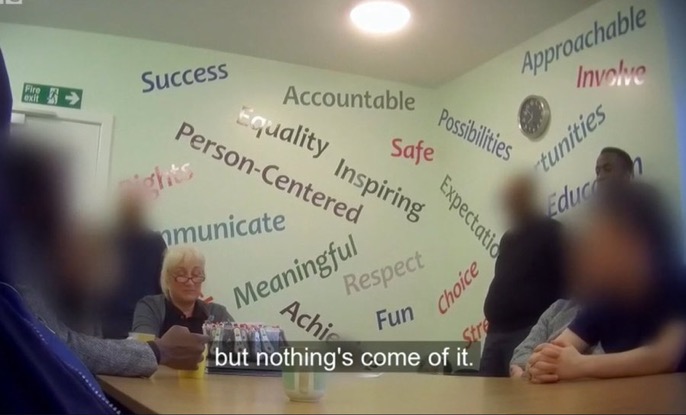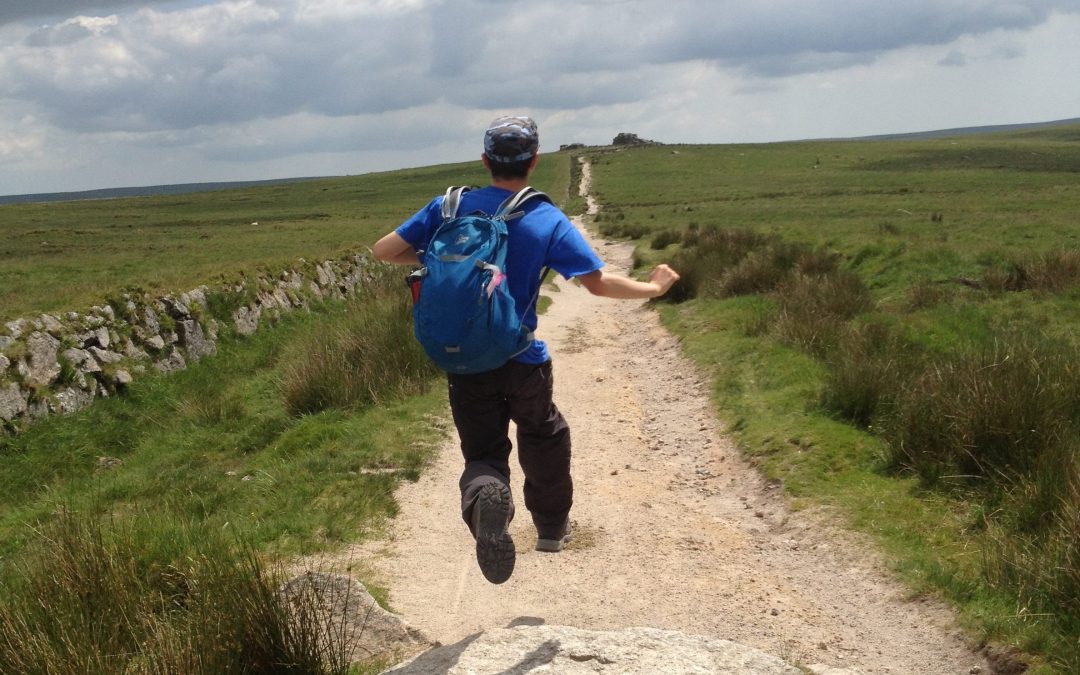As mentioned in the very first blog post, my son JJ has recently returned from 16 months in an ATU. He has been back for over 6 weeks now and although I cannot say this without fearing that I am jinxing everything; things seem to be going well. He is out everyday and starting a range of different activities. He settling into his home, developing relationships with his team and growing to trust them.
His team have had to be hands on with him at time, either because he is expressing his distress in a physical way towards them, or because he is hitting his head too hard on his indestructable walls (which incidentally, have turned out to not be that indestructable). Using the skills taught by Des the team have done a good job in providing reassurance and incidents have been short lived.
Discussion of the incidents in JJ’s core team meeting led to an interesting revelation. His care-coordinator who had listened to a description of the techniques used had not recognised them as restraints. By definition restricting JJ’s movement (whether to stop him hitting others or hurting himself) is a restraint, however what the team do is so far removed from pinning someone on the floor or tightly preventing movement that she had not recognised that it even was a restraint.
Whilst in the ATU JJ was subject to frequent supine restraint (floor restraint on his back) and occasional prone restraint (floor restraint on his front). I am not suggesting anything illegal took place, the ATU gave staff the correct training and recorded incidents in the way they should. I am saying however, that the opportunity exists for a different approach. JJ’s behaviour during an incident is not really any different where he is now than it was in the ATU. He is still prone to sudden spikes of extreme anxiety, which trigger a fight or flight response and can lead to either aggression or self-injurious behaviours. However, these are managed differently, with a different (if you like) philosophy behind that. Relationships are valued and reassurance is prized over control. This means the number of times people feel the need to be hands on with him has reduced dramatically. The length of time he spends with people hands on with him has also reduced. His ability to self regulate is increasing. Realtionships with his staff team (‘support friends’ as we like to call them) are not damaged and they are therefore more effectively able to provide the reassurance he needs when his anxiety spikes, so increasing his ability to self regulate and reducing the need for any sort of restraint.
We fully support the work of the Restraint Reduction Network (RRN) and have pledged our support, both as individuals and as an organisation.



